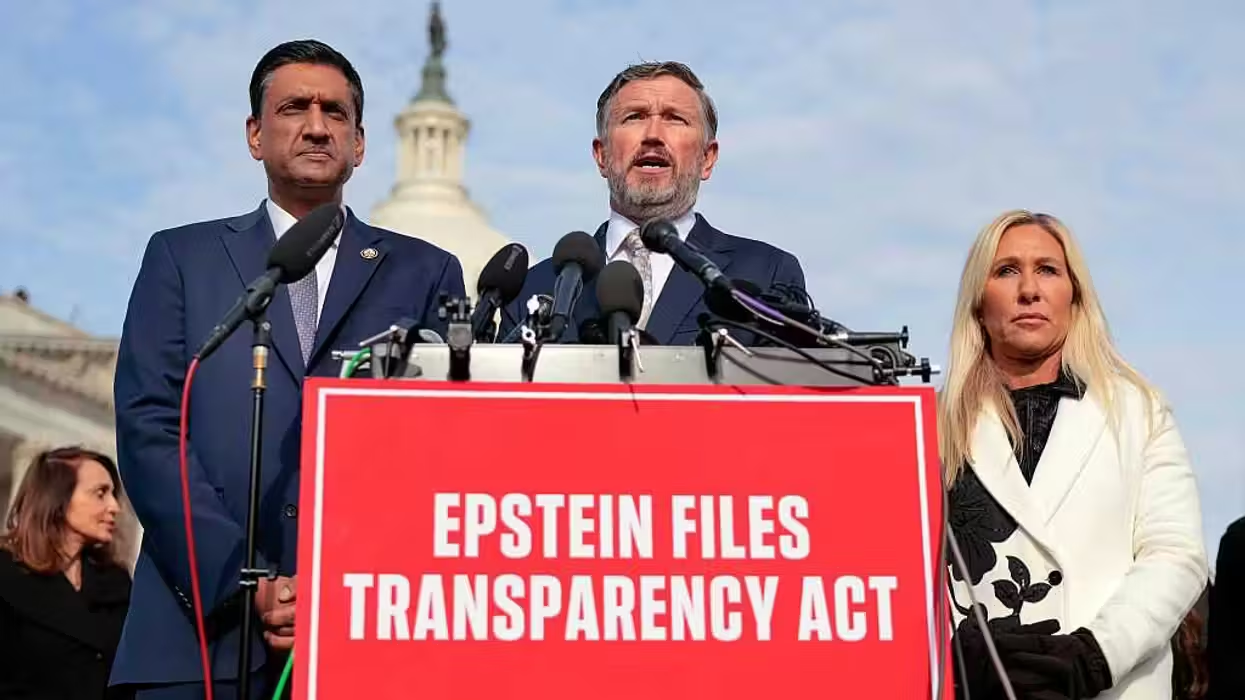
© 2025 Blaze Media LLC. All rights reserved.
"...just because it's past the date on the package, it doesn't mean it's unsafe."
You're standing in the frigid dairy aisle holding a gallon of milk. Sell by Sept. 20, it reads. That's only a few days away. Should you buy it?
 A can marked with a date -- but what exactly does this date mean? This is what some groups want to clarify in the hopes of reducing food waste due to food label misunderstandings. (Photo: Shutterstock.com)
A can marked with a date -- but what exactly does this date mean? This is what some groups want to clarify in the hopes of reducing food waste due to food label misunderstandings. (Photo: Shutterstock.com)
Or what about that carton of sour cream in your fridge that says best by Sept. 17. Should you not put a dollop on your taco salad?
A new report from Harvard Law School's Food Law and Policy Clinic and the Natural Resources Defense Council found misunderstandings about food dates is contributes significantly to food waste in the United States.
The report found that about 40 percent of food in the U.S. gets thrown out -- that's about 160 billion pounds of food each year.
"The Dating Game: How Confusing Food Date Labels Lead to Food Waste in America" takes a look at the laws governing food date labels and asks "policymakers to create a better system that would help us maximize our food budgets, reduce food waste and improve food safety in the United States," Harvard Law School explained on its blog.
"As evidenced by a range of industry, governmental and NGO reports, confusion over food expiration dates–for example, 'best by,' 'use by,' and 'sell by' labels–is a key cause of the high and rising rates of waste in the United States. With the exception of infant formula, the federal government does not have any standardized laws or regulations regarding date labels on food products," Harvard stated. "Because of the lack of federal oversight, states regulate the use of these labels in a wide variety of ways, causing great confusion."
 This graphic details some areas of confusion about the food labels. (Image via NRDC Issue Brief/Harvard Food Policy Initiative)
This graphic details some areas of confusion about the food labels. (Image via NRDC Issue Brief/Harvard Food Policy Initiative)
This confusion in turn leads to retailers and consumers tossing food that might not actually be past its prime. In fact, the study found more than 90 percent of Americans might be throwing away good food, associating the food label with safety, not freshness.
Lack of understanding about the labels is not necessarily a health hazard. Researchers said they found no significant difference in incidents of food-borne illness between states such as Massachusetts, which has very strict labeling rules, and others such as New York, which is more lax.
In fact, University of Minnesota food safety scientist Dr. Theodore Labuza, who reviewed the study, said that in his more than 30 years of researching date labels, he was unaware of any outbreaks of illness related to food being kept in the refrigerator or on the shelf past an expiration date, as long as it was stored properly.
"People think the use-by date means either the product is going to die or you're going to die if you eat it. And it's just not true. You can't tie shelf life to a date," Labuza said. "If the food looks rotten and smells bad, you should throw it away, but just because it's past the date on the package, it doesn't mean it's unsafe."
“Expiration dates are in need of some serious myth-busting because they’re leading us to waste money and throw out perfectly good food, along with all of the resources that went into growing it,” Dana Gunders, NRDC staff scientist with the food and agriculture program, said in a statement. “Phrases like ‘sell by’, ’use by’, and ‘best before’ are poorly regulated, misinterpreted and leading to a false confidence in food safety. It is time for a well-intended but wildly ineffective food date labeling system to get a makeover.”
Here are some of the recommendations to reform this system:
- Making “sell by” dates invisible to consumers, as they indicate business-to-business labeling information and are mistakenly interpreted as safety dates;
- Establishing a more uniform, easily understandable date label system that communicates clearly with consumers by 1) using consistent, unambiguous language; 2) clearly differentiating between safety- and quality-based dates; 3) predictably locating the date on package; 4) employing more transparent methods for selecting dates; and other changes to improve coherency;
- Increasing the use of safe handling instructions and “smart labels” that use technology to provide additional information on the product’s safety.
“We need a standardized, commonsense date labeling system that actually provides useful information to consumers, rather than the unreliable, inconsistent and piecemeal system we have today,” Emily Broad Leib, lead author of the report and director of Harvard Law School’s Food Law and Policy Clinic, said in a statement. “This comprehensive review provides a blueprint calling on the most influential date label enforcers – food industry actors and policymakers – to create and foster a better system that serves our health, pocketbooks and the environment.”
Reuters contributed to this report. Featured image via Shutterstock.com.
--
[related]
Want to leave a tip?
We answer to you. Help keep our content free of advertisers and big tech censorship by leaving a tip today.
Want to join the conversation?
Already a subscriber?
more stories
Sign up for the Blaze newsletter
By signing up, you agree to our Privacy Policy and Terms of Use, and agree to receive content that may sometimes include advertisements. You may opt out at any time.
Related Content
© 2025 Blaze Media LLC. All rights reserved.
Get the stories that matter most delivered directly to your inbox.
By signing up, you agree to our Privacy Policy and Terms of Use, and agree to receive content that may sometimes include advertisements. You may opt out at any time.






